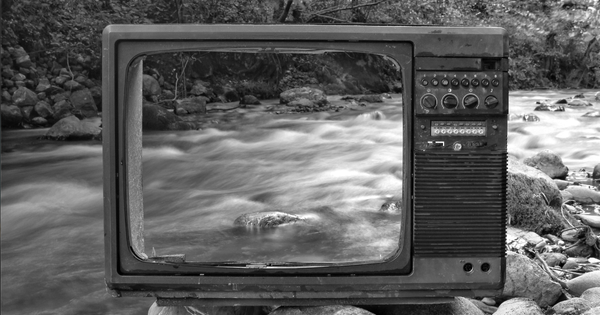When our society faces economic uncertainty, as it has in recent years, we tend to see a proliferation of headlines regarding how companies can ensure efficiency within their marketing programs and squeeze every last bit of value from every dime they’re spending. But why should such advice be given (and followed) only in times of fiscal concern?
Adopting strategies that maximize ROI and extend the value of your ad dollars, especially in the dynamic TV space, will ensure your brand is able to weather any storms that might come its way. Take the travel space, for example. While many travel and hospitality brands, in the face of an unprecedented global pandemic, turned against the conventional “advertise in good times and bad” industry wisdom, there were notable exceptions that pivoted to inspirational campaigns and ones centered on safety and resilience.
These brands were better positioned to capitalize on the huge post-pandemic travel boom. Now, even as industry pundits debate whether heightened travel spend will continue, the brands that continue to invest will be the ones that continue to capture a larger portion of global travel spend.
For those advertisers looking to establish a resilient, efficient foundation with their media buys, particularly in the much-transformed space of TV advertising, the following three approaches warrant careful consideration.

Enhanced addressability in TV buys
TV has never been more addressable than it is today, and the ability to target households (and audiences) with precision- across linear and streaming platforms- represents an exceptional opportunity to maximize the value of ad spend. The key is to look for partners with access to rich set-top box and IP data, as well as the technology that enables advertisers to follow audiences across their viewer journey.
The addressability of linear TV becomes particularly powerful when advertisers tap into their own first-party data, as well as privacy-safe third-party segments in order to inform targeted buys built on set-top box insights. Ultimately, these buys combine the power of the right content and the right audiences.
Beyond seeking partners that can help make their linear TV buys addressable, advertisers also need to layer in addressability on streaming platforms. This ensures you allocate budget to finding viewers across devices, platforms, and channels—essentially, everywhere they’re watching beyond that big screen in the living room.
In recent years, insurance and healthcare brands have most consistently taken advantage of these addressable opportunities, targeting audiences most likely to be investing in such areas. But the addressable opportunity is present—and, in many cases, undertapped—across all categories.
Power of streaming and CTV
Linear TV remains a powerhouse within the overall viewership equation, but a growing number of consumers are “cord-stacking”—that is, layering streaming services on top of their network and cable viewing habits. This has been the case for years, but the trend is becoming applicable across a growing array of high-value content, including live sports and news. For advertisers that want to reach these highly loyal and engaged audiences, TV buys need to be supplemented with CTV and streaming inventory in order to maximize value and efficiency.
The right partners can even help advertisers tap into multicultural audiences, all in the context of a single buy. For example, when it comes to younger Hispanic consumers, marketers would be wrong to assume that these individuals live in an English-only world. Their realities are very much bilingual, which is evident both in their daily personal interactions as well as the media that they consume. Streaming and CTV extensions enable advertisers to tap into these audiences in a powerful way.

Deep connections with unique regional sponsorships
While many of the opportunities to maximize TV campaign efficiency rely on sophisticated data tools and technology, advertisers must also keep in mind the ability to improve their ROI with high-impact, outside-the-box executions that are designed to connect with loyal, highly engaged viewers. For example, regional news, sports, and other specialty programming offers the opportunity for brands to work with partners to craft bespoke sponsorships that are artfully woven into the content itself, from branding on weather vans and scoreboard sponsorships.
While these types of integrations might seem highly traditional in an industry dazzled by the latest in AI applications, there’s a reason they persist: They are incredibly effective when it comes to fostering deep brand recognition and affinity among loyal, high-value audiences.
For example, in New York, a furniture retailer has been a sponsor of the local news early morning hour for three years running. This sponsorship has tangibly benefited the company in starkly different economic realities: When the housing market was strong, people needed home furnishings for new homes, and the local news sponsorship drove immediate awareness with these new owners. Now, with home interest rates so high, people are investing in their current homes with new furnishings, and the company has been able to tailor sponsorship messaging for these individuals accordingly.

As advertisers, we must ride the economic tides—but those tides flow differently for every brand, and they’re influenced by more factors than ever before. Regardless, here’s the ground truth: Whether the tide is in or out for your brand, it’s not an option to stop advertising. The perils of doing so have been well documented. The real fail-safe strategy is to make efficient ad spending the default in good times and bad—rather than a fallback plan.
The CMO Alliance Community is the perfect place to discuss any challenges you're facing with your advertising placements. Tap into the combined minds of a global network of CMOs and marketing leaders.
Best of all, it's free to join.




 Follow us on LinkedIn
Follow us on LinkedIn




